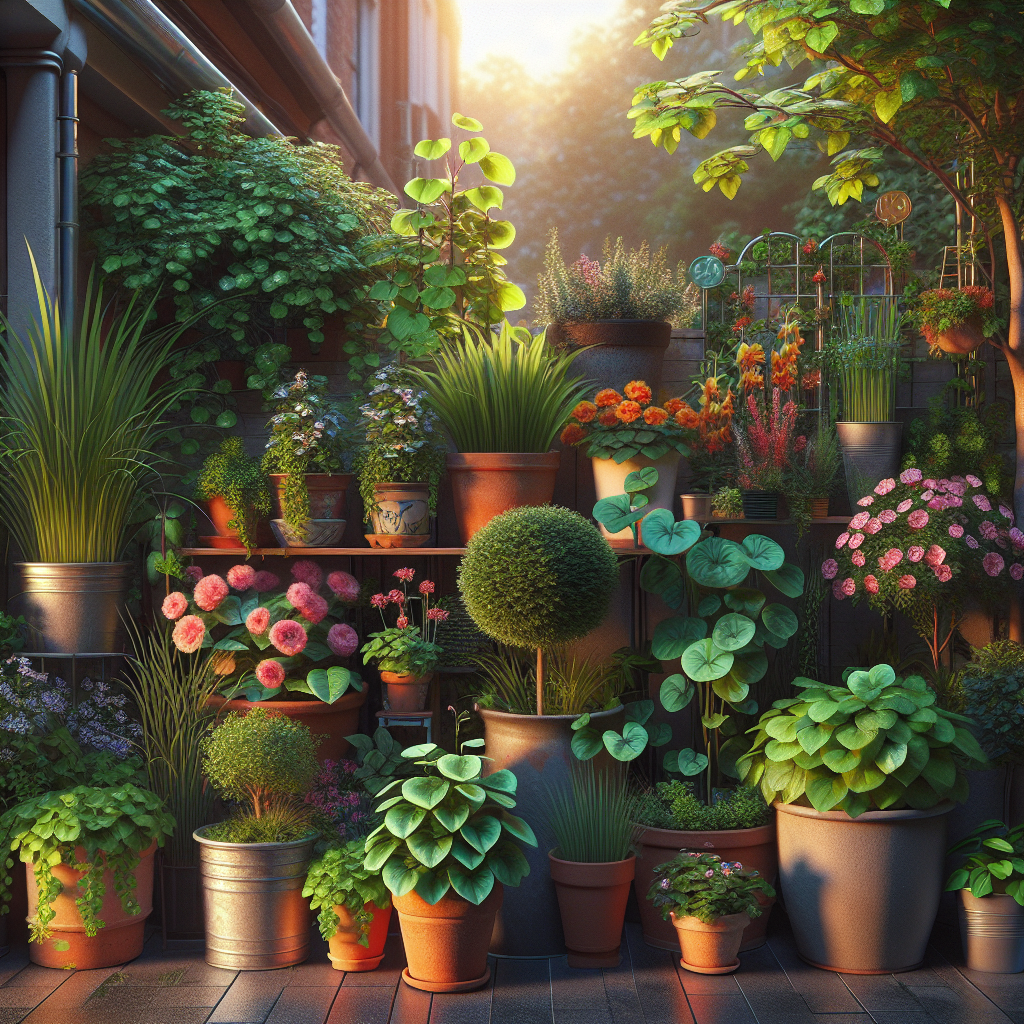Table of Contents
<h1>Thriving in Small Spaces: The Joys of Container Gardening
In today’s urbanized world, the desire to connect with nature and grow our own plants is often hindered by space constraints. However, a lack of yard space doesn’t mean you have to forgo your green thumb aspirations. Container gardening—growing plants in pots, tubs, or other containers—offers a versatile and rewarding alternative that can turn even the smallest spaces into thriving green sanctuaries.
The Flexibility of Container Gardening
One of the greatest benefits of container gardening is its flexibility. You can garden on a balcony, windowsill, rooftop, patio, or even indoors with adequate light. Containers allow you to move plants to optimize sunlight exposure or protect them from harsh weather conditions. Whether you’re in a city apartment or a suburban townhouse with limited outdoor space, container gardening provides an accessible way to cultivate your own mini-garden.
Choosing the Right Container
The choice of container is fundamental to the success of your garden. Almost anything that holds soil and has drainage holes can be used as a container: traditional clay pots, wooden boxes, plastic tubs, ceramic vessels—your imagination is the limit. However, several key factors should guide your selection.
- Size: Choose containers appropriate for your plants’ root systems. Larger containers hold more soil and retain moisture better but are heavier and harder to move.
- Material: Different materials have different properties affecting plant health:
- Terracotta: Porous and allows airflow but can dry out quickly.
- Plastic: Lightweight and retains moisture well but may not offer good air circulation.
- Wood: Aesthetically pleasing and good insulation but may rot over time if not treated properly.
- Drainage: Adequate drainage is crucial to prevent waterlogging, which can lead to root rot.
Soil Selection and Preparation
The soil you use in container gardening should be well-draining while still retaining enough moisture for plant roots—a balance that’s easier achieved with soilless potting mixes than garden soil. These mixes usually contain peat moss or coconut coir for water retention, perlite or vermiculite for aeration and drainage, and compost for nutrients.
Consider adding slow-release fertilizers to ensure consistent nutrient availability over time or enrich the mix with organic matter like worm castings or aged manure.
Plant Choices for Containers
Almost any plant can be grown in containers if given appropriate care:
- Vegetables: Tomatoes, peppers, lettuce, radishes
- Herbs: Basil, parsley, thyme
- Flowers: Petunias, marigolds
- Small Trees/Shrubs: Dwarf citrus trees
When selecting plants:
- Compact Varieties: Seek out dwarf or bush varieties bred specifically for containers.
- Compatibility: Plant species with similar water/light needs together.
- Succession Planting: Stagger plantings throughout seasons for continuous harvests.
Watering Strategies
Water management in container gardening is critical due to rapid drying:
- Use self-watering pots/reservoirs.
- Mulch surfaces with organic matter (e.g., straw) reducing evaporation.
- Water deeply until excess drains from bottom ensuring thorough root saturation rather than frequent shallow watering promoting superficial rooting vulnerable during hot spells.
Lighting Requirements
Light availability can be challenging especially indoors/urban areas; maximizing available natural/artificial light drives healthy growth/photosynthesis processes ultimately rewarding efforts:
Sun Lovers (6+ hours daily):
Tomatoes/Pepper/Most flowers thrive requiring plenty direct sunlight placing south-facing windows optimal positioning/successful yields.
Partial Shade Tolerant (3–6 hours daily):
Lettuce/Spinach/Herbs such as parsley/mint adapting lower light settings thriving equally successfully potentially east of west-facing locations alternatively utilizing artificial grow lights supplementing deficits naturally occurring gaps enhancing overall growth responses favorably proving invaluable investment often overlooked inducing favorable outcomes transforming normally marginal spaces robust flourishing mini ecosystems full potential realized maximizing possibilities “green revolution” embracing small scale urban agricultural experiments yielding disproportionate delightful results exceeding wildest imaginations connecting simple joys playing nurturing witness unfolding beauty nature intimately up close personal individual levels astonishing witnessing everyday miracles germination blossoming fruition culminating delicate miniature harvests homegrown sustainable inclusive empowering future generations continued stewardship respecting natural world conserving precious resources balancing practical aesthetic dimensions seamlessly intertwined single holistic continuum symbiosis mutual dependence perpetuating life itself inherently fragile preserving inherent intrinsic balance propelling forward unending cycle perpetual renewal rebirth infinitely regenerative processes fundamentally grounding spiritual beings journey multi-faceted complexities distilled purity sublime essence simplicity life’s most basic fundamental truths rediscovered revitalized renewed hopefulness optimism exuberance beauty awe-inspiring resilience adaptability adversity triumphantly acknowledging truth fully embracing wholeheartedly mindfully peacefully harmoniously fulfilled interconnectedness profoundly transformative positively inspiring journey unlocking potential latent implicit intimate sacred calling steward caretaking nurturing loving cultivating tenderly faithfully celebrating fundamentally intertwined existence shared collectively universally boundlessly eternally enduring essence humanity bonded nature infinite everlasting circle life manifesting wondrously joyously exuberantly abundantly richly vibrantly magnificently!













